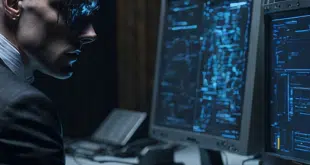A major Federal Reserve payments study released last week grabbed headlines for documenting a dramatic three-year increase in electronic transactions, but a closer examination this week by officials who worked on the report highlights a number of subsidiary trends in such key areas as remote deposit capture, person-to-person payments, and credit cards.
The study was the subject on Tuesday of a webinar sponsored by NACHA, the regulatory body for the automated clearing house network, and hosted by Richard R. Oliver, executive vice president at the Atlanta Fed, and David Stewart, senior expert at McKinsey & Co., which helped the Fed prepare the study. The fourth in a series of triennial reports the Fed has released since 2000, the Federal Reserve Payments Study examines trends in checks, the ACH, and credit, debit, and prepaid cards.
Electronic imaging of checks for clearing between banks has become nearly universal, with 96% of some 18 billion interbank checks settled via image or substitute check (a printout of an image) in 2009, according to the report. That’s more than double the 43% image share in 2006. But most of this imaging is taking place at the bank, it turns out. Some 87% of checks still arrive at the bank of first deposit as paper items. That means remote deposit capture, often cited as perhaps the fastest-growing form of electronic payment ever launched, still accounts for only 13% of deposited checks. Remote capture allows businesses to create and deposit check images instead of the paper originals.
“This is one [result] that surprised the heck out of me, that only 13% of checks are deposited as images,” said Oliver during the webinar. “Many people would assume it would be larger.” But in putting the number in perspective, Stewart pointed out that most banks still haven’t rolled out remote capture to all clients and are only starting to offer it to consumers. Many banks fear the risk involved in letting outside entities create check images, and so have been choosy in which customers they offer it to. “This is not something all banks want to roll out for all account holders,” Stewart said. Still, he added, remote deposit capture will only continue to grow. “It’s not a product offering that’s going to go away,” he said. “There’s real demand on the corporate side.”
Another surprising result is that while the number of checks written declined overall, from 33.1 billion in 2006 to 27.5 billion last year, the volume of checks consumers write to each other actually grew, from 2.2 billion to 2.4 billion. All other categories of checks showed declines. “Consumer to consumer is an area where little progress has been made [toward electronic payment],” noted Oliver.
The reason could have to do with a dearth of “effective electronic substitutes,” Oliver said. That situation could be changing, however. The growth in consumer-to-consumer checks comes as many banks are beginning to roll out person-to-person payment products designed to allow customers to make payments to other individuals such as babysitters or relatives.
Credit cards, meanwhile, are also running counter to the trend, according to the Fed report. While all other forms of electronic payment grew in the three-year period, credit plastic actually showed a slight decline in usage, from 21.7 billion transactions to 21.6 billion. “For the first time in these studies, we see a decline in an electronic payment instrument,” noted Oliver. By contrast, debit card transactions soared to 37.9 billion from 25 billion, displacing checks as the most-used non-cash payment type.
Still, neither Oliver nor Stewart were ready to concede a long-term decline for credit cards. They chalked up the three-year drop to a severe credit crunch that accompanied the financial crisis of 2008, along with the deep recession that crisis touched off. “I wouldn’t conclude from this that credit card usage is going to continue on a downward trend,” said Stewart.





